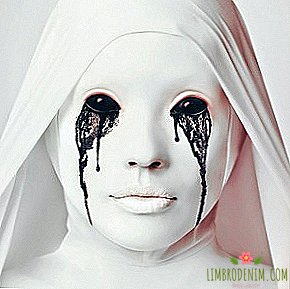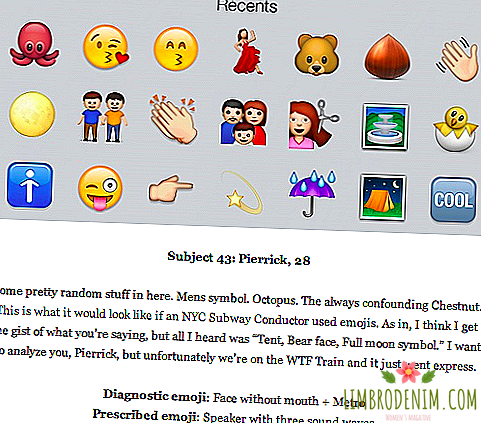"Burn it all with fire": How I became a stylist in Russia
Work in the fashion industry still seems many something frivolous. At best, knowledge of it is limited to clichés from the movie: if we are talking about stylists, they represent a person who straightens wrinkles on model clothes every half hour. We asked Irina Dubina about what the profession of a stylist really means and how to become one: leaving a journalistic career, Dubina fully focused on styling filming, having worked with publications from Buro 24/7 to the online version of Italian Vogue and brands from Kuraga to Maria Stern.
Text: Irina Dubina, stylist and author of the telegram channel "Megastil"
I never dreamed of working in fashion. Until the age of eighteen, I was not interested in clothes at all - my mother had to work hard to drag me to the store to buy a replacement for leaky jeans or a down jacket for the winter. This is strange, because I remember how I loved to sew clothes for my children and to decorate paper dolls - I had about a dozen of them. Probably, the interest was still sitting somewhere deep, but the stories in the spirit of "I was stuck in the young nails in Vogue magazines" are not about me. Although Mom never refused to buy clothes, not to say that she adhered to some special style. For me, this is still a sore subject: no one has instilled in me a sense of beauty since childhood and I had to work on cultivating taste and style at a conscious age.
After school, I entered the Moscow Engineering Physics Institute - Moscow Engineering Physics Institute. It was the decision of the parents: all my life I considered myself an absolute humanist, but then I had to plunge into physics and mathematics. Mom, naturally, chose the university for reasons of prestige of the future profession: she thought that after graduation I would go to work at some Rosatom and would earn big money. Then I became interested in fashion - I think I finally began to feel attractive and wanted to somehow decorate myself. At that time, fashion blogs were just starting to appear - this is how I discovered a brave new world in which I could hang out for several hours a day. I sat in the public places on VKontakte, where the girls laid out their bows. Some of them, by the way, have become successful stylists and bloggers.
"Hello! Here is my blog"
On the fourth course, I finally understood that the future in the nuclear industry is not at all interesting for me. I wanted to try myself as a stylist, but I didn’t have the working tools - the actual things. My wardrobe was more than modest, and there was no money for clothes. Then I decided to start a blog in LiveJournal and post there everything that I think about what is happening in fashion. I always worked well with texts, and writing notes was enjoyable. Toward the end of the course, I decided to try my luck in some glossy magazine, but I did not have a resume or portfolio, so my cover letter looked like: "Hello! My name is Ira, I would like to work in your magazine. Here is a link to My blog". I was answered only from Collezioni: I was taken as an intern and in almost five years I grew to a feature editor.
The work of a fashion journalist implies a large store of knowledge on the topic of not only fashion, but also related areas. Perhaps the best that this experience has given me is knowledge about the history of the costume, about the nature of the stylistic trends, about the work of the industry. I liked writing texts and interviewing, but once I felt myself becoming cramped. I wanted to try myself to create a fashionable image - it seemed I had the potential. My main editor and friend Tanya gave such an opportunity, and we did some simple filming in tandem with fashion editor Lesha. The sensations were great: from a set of things you create a complete, complete image.
On two fronts
In February 2015, Collezioni was closed, and I, together with the Chief Editor, moved to Cosmopolitan Shopping as editor-in-chief. Not to say that the aesthetics of the magazine was close to me, but precisely because of this place I began to work as a stylist. About a year later I was offered to become the chief editor of Harper's Bazaar, where I continued to develop in a new direction. All this time I worked on two fronts: I wrote and made shots. And if at the first I felt like a fish in water, then with the second things were not going so smoothly. Due to lack of experience, there were failures of shooting - I know that colleagues didn’t speak well of them behind my back. Communicating with toxic people also did not add confidence in yourself. In 2017, the site team was dismissed; I was sure that after a short break I would return to full-time work in some edition, but eventually I left for freelancing. For a year and a half I worked both as a journalist and as a stylist, but then I threw all my strength on the latter.
There were a lot of difficulties. Firstly, most people from the industry for a long time perceived me as an author, not a stylist - partly because my experience was small compared to my colleagues. Secondly, I have never worked as an assistant, which I regret, and many aspects had to learn from my mistakes. Why, periodically failures happen now. Everything is important: from how the thing sits on the model in the frame, to the completeness of the image with a hairstyle and make-up. It seems that these are all trifles, but, analyzing the work of cool stylists, I began to understand that it is the little things that make the picture. To be honest, I still do not consider myself to be a professional: I have to upgrade my skills every day and I always try to make a new shot better than the previous one. From impostor syndrome no one is immune.
Month without filming
Freelance stylist work is a constant struggle with your own ego. You can sit without work for weeks, watching your colleagues doing something every day, and feeling like a mediocre beggar. In the summer, I had a nervous breakdown: it seemed to me that no one needed me, I had no abilities and no one liked my shooting. I sincerely envied those who have regular work: it seemed that it was happiness.
Now I understand that daily surveys in themselves mean nothing. If you are not Lotta Volkov, you hardly have to work exclusively with top customers and cool magazines. By agreeing to dubious projects, you are wasting energy and creativity, so it’s much more important to prioritize, rather than chasing demand. I do not have a stable shooting schedule, every month everything is different. For example, this January unexpectedly turned into a solid vacation - not a single project. Of course, it's scary: you think, what if next month will be the same? It’s not just a matter of earnings, but also of the fact: it seems that if clients and magazines don’t offer you a job, then you’re worse than others. The reasons, however, can be many. For example, in our industry, orders often appear due to connections: someone advised you or your friend the photographer brought you to the project. There are even those who are specifically trying to make friends with influential guys, but this approach is not close to me - maybe that's why I spent all of January out of work!
Rude customers and contingencies
It seems to me that it is difficult for people from the outside to believe that the profession of a stylist is emotionally and physically hard work, but this is indeed the case. You carry heavy packages, you run around the city looking for the right things, and on the set you crawl on your knees to tie shoe laces. Often you work with unpleasant customers who want “I don’t know what,” they think your fee is too high and they are sure that they understand styling better than you. You take part in projects for which they pay very little or are “forgotten” to pay at all. Often you take full responsibility for things whose price is comparable to the average salary in Moscow.
The last point, by the way, is the biggest pain of freelance stylists: those who work with magazines are usually safer because the publication takes responsibility for things. In my practice, there are enough problem situations. Once the assistant overlooked and, upon delivery, on the silk dress, a clue was found - and the thing was not even put on the model. Fortunately, I managed to fix it, but I paid for the repair myself. On another shoot, I bought a top combination and forgot to check it in the store - after the fact, it also turned out to be a clue. When you return to prove that it was, of course, failed - the thing had to be redeemed, and it cost, to put it mildly, a lot.
It happens that in the process of shooting the model sat down unsuccessfully or stepped on, broke off the seam, erased the sole of the shoe, stretched the knees on the pants - the responsibility for this is again you. It was ridiculous: they assured me somehow in the store that I had ripped off the tag on the body, and then sewed it on with other threads. In short, I'm afraid even to estimate how much money I had to pull out of my pocket for such unforeseen expenses. And the client, alas, is far from always ready to sacrifice a ruble.
Things and limitations
By the way, the question of where to get things for filming is another sore subject for most local stylists. There are very few brand showrooms that provide samples, that is, samples of podium things, in Moscow, so you often have to negotiate with local stores. As far as I know, this practice is common only in Russia - in Europe and America there is no such thing. Stores, in turn, also have no reason to lend things, especially if you rent for a non-Moscow client. What if this dress or shoes could anyone buy? Every time you have to persuade the PR people to give at least a couple of positions.
The second point - with clothes from the shops you need to be as careful and accurate as possible, God forbid, when you return, a defect is found on it. On the one hand, this situation limits the working range, but on the other - you can pump skills of non-standard approach to styling. For example, I decided that since I do not have the opportunity to constantly take Gucci and Balenciaga on the set, I will look for cool things in other places: in second-hand, vintage, Avito. My home already has a warehouse of clothes, shoes and accessories that I bought specifically for shooting and use it regularly. By the way, this is very convenient: everything is at hand and you don’t have to run all over the city every time. At first I was sorry to spend the hard earned money on such purchases, but now I understand - this is my set of tools for work.
Local industry
I often hear from my colleagues that there is no fashion industry in Russia, supposedly the market is amateurish. The countdown is from the appearance of Vogue in 1998 - it is believed that too little time has passed for the mechanism to start working without failures. Yes, here, of course, there are nuances of work from both the financial and the creative side, but where are they not? I believe that everything depends on you. You need to decide whether you want to adapt to the system and justify yourself with the lack of conditions and bad taste of customers and editors, or if you want to squeeze the most out and make a cool product despite everything but. Sometimes you think, burn it all with fire, who needs it at all? But the trick is that it should be necessary first of all to you yourself. When you work in the creative field, it is important to remain honest with yourself and respond first and foremost to the internal censor.
cover: Dima Black





